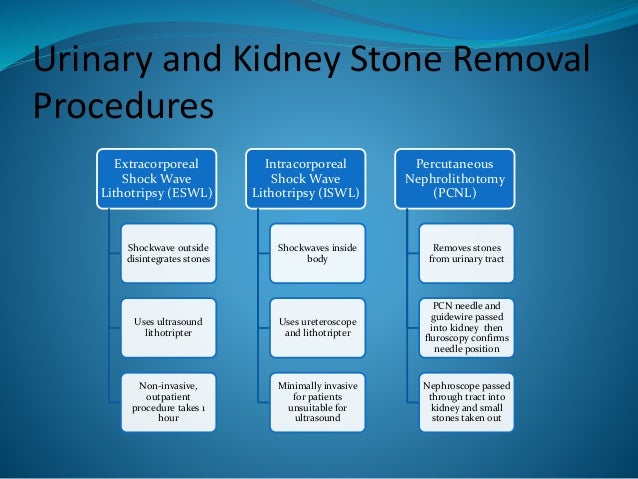Lithotripsy is a medical procedure that uses shock waves or a laser to break down stones in the kidney, gallbladder, or ureter. the remaining particles of small stone will exit the body when a. Laser lithotripsy for kidney stones. the presence of kidney stones can be extremely painful. in the past, treatment would mean surgery with, more often than not, an incision being made. however, with the advent of technology, lasers have now been used as a treatment method for getting rid of kidney stones.. An alternative procedure for stone removal is to use a scope to go up the patient’s penis through the urethra to the kidney and then use a medical laser to break up the stone and pull out the fragments. this is the preferred method for some of the smaller stones that cannot be broken up with shock wave lithotripsy..
Kidney stone removal surgery is called a ureteroscopy and it entails a surgeon entering the urethra through the bladder to break up and remove stone with a laser and forceps, webmd explains. recovery time from a ureteroscopy is typically no more than two or three days.. The kidney. the stone is broken up using an instrument or a laser, and the fragments are taken out using a special collection device. a temporary ureteric stent (a soft plastic tube) is normally left in place between the kidney and the bladder after the procedure, together with a bladder catheter (a fine tube). figure 1 shows the urinary system. Another thing that tends to affect the success rate of laser surgery for kidney stones is the type of kidney stone a person has. stones that formed from uric acid or calcium tend to break apart much easier than other types of stones. staghorn stones, which are irregularly shaped stones with large protrusions sticking out of the sides, tend to be difficult to break up with a laser regardless of.

0 komentar:
Posting Komentar